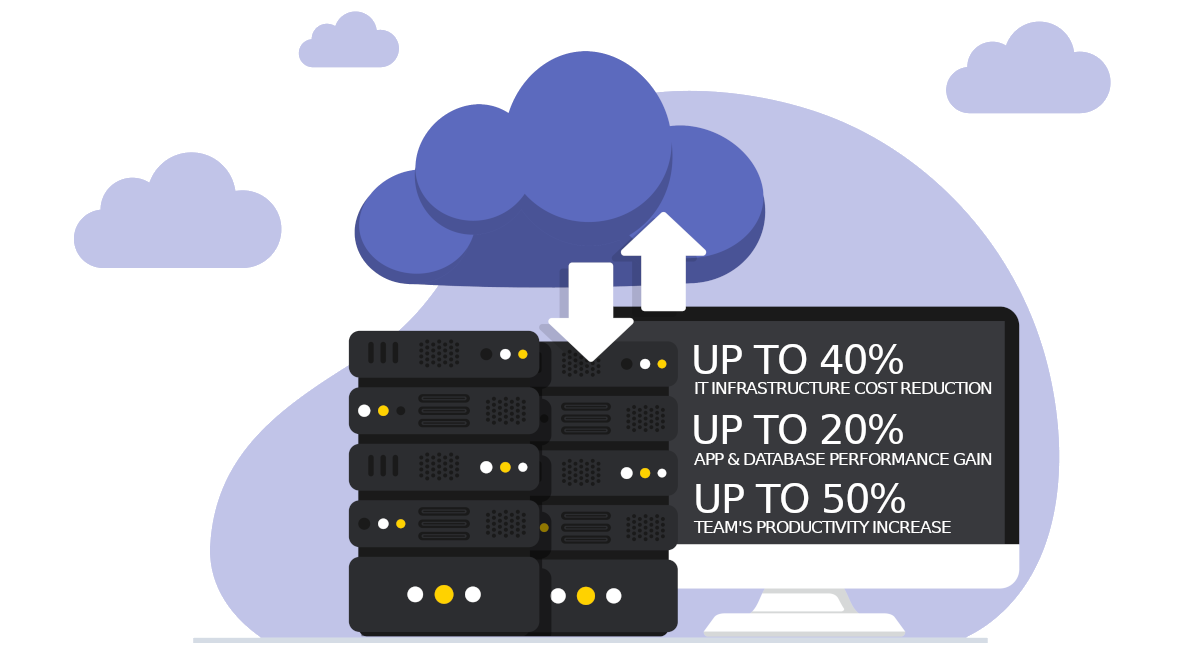
Why you should migrate your Infrastructure to the Cloud
Moving your workloads to the cloud completely eliminates the burden of maintaining your hardware on your own so that you can focus on your project.
Hosting your infrastructure in a redundant, fault-tolerant and protected cloud environment significantly decreases the risk of losing your precious data, eliminates hardware expenses, and improves your team's productivity.
The main goal of migration is to assist our customers in moving their applications and databases to the cloud environment to achieve greater flexibility and cost savings. CinderCloud migration services include migration planning, design of migration tools (automation scripts), and support with the end-to-end migration process.
Cloud servers offer impressive scalability and the cloud itself has a potential to migrate a large number of servers in relatively short time. The key for cost-efficient cloud migration is with automated cloud migration services, done by skilled team of DevOps.
On-premise Issues CinderCloud Solves With Cloud Migration
Hardware Failures
Migrate your workloads to the cloud and eliminate the risk of losing your data due to HW failures.
Infra Maintenance
Get rid of the burden of maintaining your infrastructure on your own.
High Operational Costs
Reduce your Hardware and SysAdmin monthly expenses.
Security Issues
Place your infrastructure in virtually isolated cloud resources behind a managed firewall.
Cloud Migration Overview
We specialize in data migration to our Public Cloud Infrastructure, based on OpenStack, as well as the migration to the third-party hosting providers such as Amazon Web Services (AWS) and Google Cloud Platform (GCP).
Migration of a company’s first workload usually takes 1-2 months for small workloads and 6+ months for medium and large workloads. Subsequent workloads migration require less time due to the experience gained during first workload migration.
workload - a definition of any activity that consumes cloud-based resources (vCPU, RAM, SSD Storage), it can be an application, a running container in the system, a database, Virtual Machine (VM), etc...
Cloud Migration Procedure Step-by-Step
Every cloud migration procedure is different, depending on the scope and the volume of customer workloads. Below we present the typical steps we at CinderCloud take to perform cloud migration.
1. Cloud migration objective setting
- Establish cloud migration goals (improving application or database performance, reducing infrastructure costs, etc.).
- Define workload types (virtual machines, applications, databases).
- Assess workload complexity to define the scale of migration.
2. Cloud platform selection
- Choose the platform (CinderCloud OpenStack or the third-party OpenStack).
- Verify the compatibility of the migrated workloads with the destination cloud platform, using PoC (Proof-of-Concept) method.
3. Migration procedure design
- Estimate cloud resources (vCPU, RAM, SSD Storage) required to migrate customer's workloads.
- Assess the cloud migration costs
- Verify the number of changes to the workloads (refactoring procedure), required to migrate data to the cloud.
- Select tools for automated data migration.
4. Migrating data to the cloud
- Production environment setup, based on the design assumptions, to provide compatibility with the migrated workloads.
- Migration of customer's workloads to the cloud.
5. Post-migration testing, performance tuning, security analysis
- Post-migration functional testing of the worklouds in new production environment.
- Conducting the performance tests on the migrated workloads.
- Performance optimization and hardening (if needed)
6. Environment switchover
At this stage, the migration is complete, new production environment is provisioned and the customer may switch-off on-premises infrastructure and commission the new cloud environment.
Ready to migrate?
Let's discuss the strategy of your workloads' migration to the cloud
Contact us


